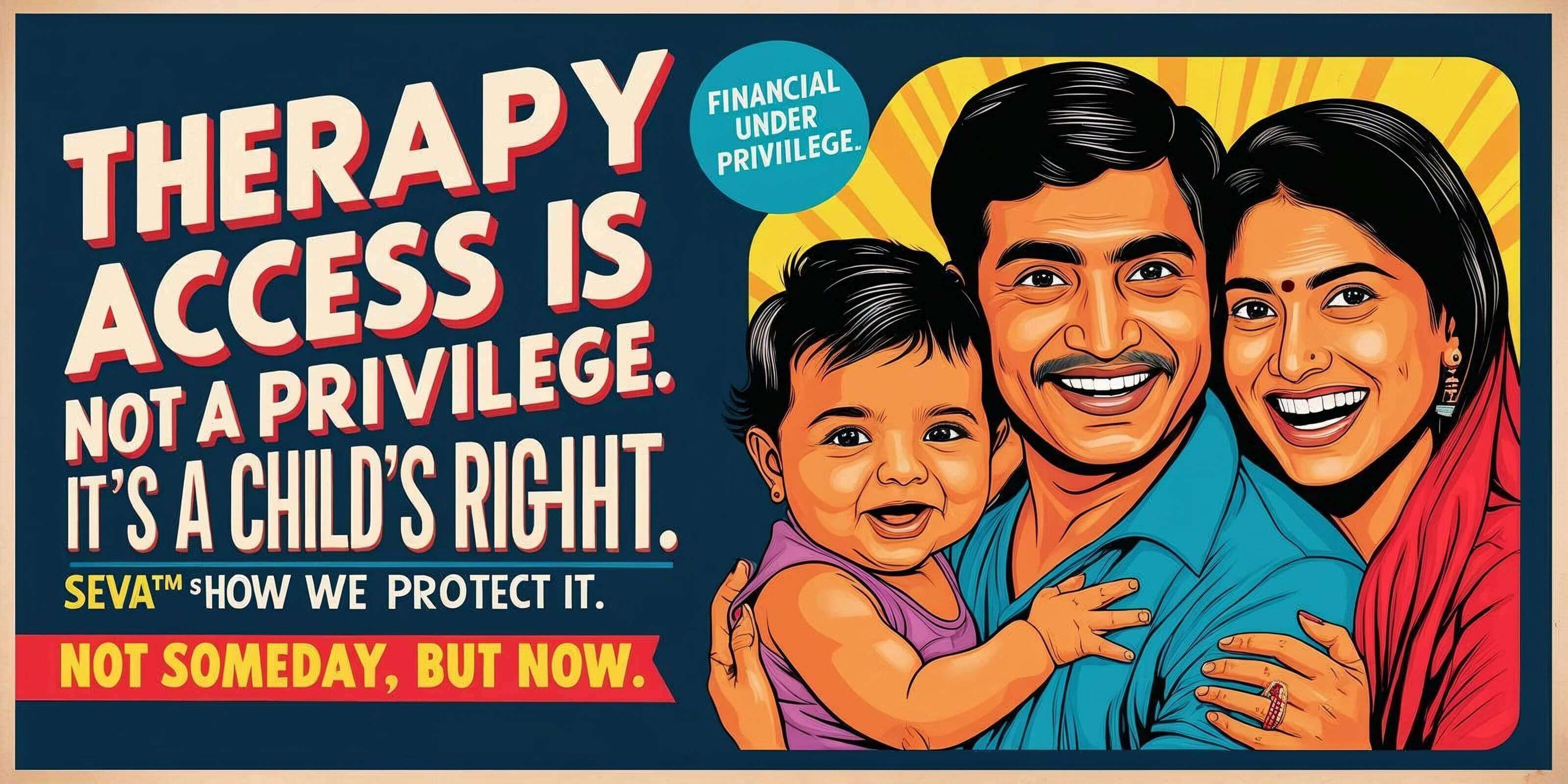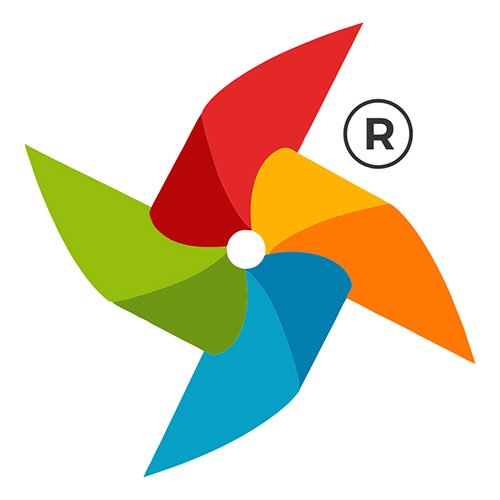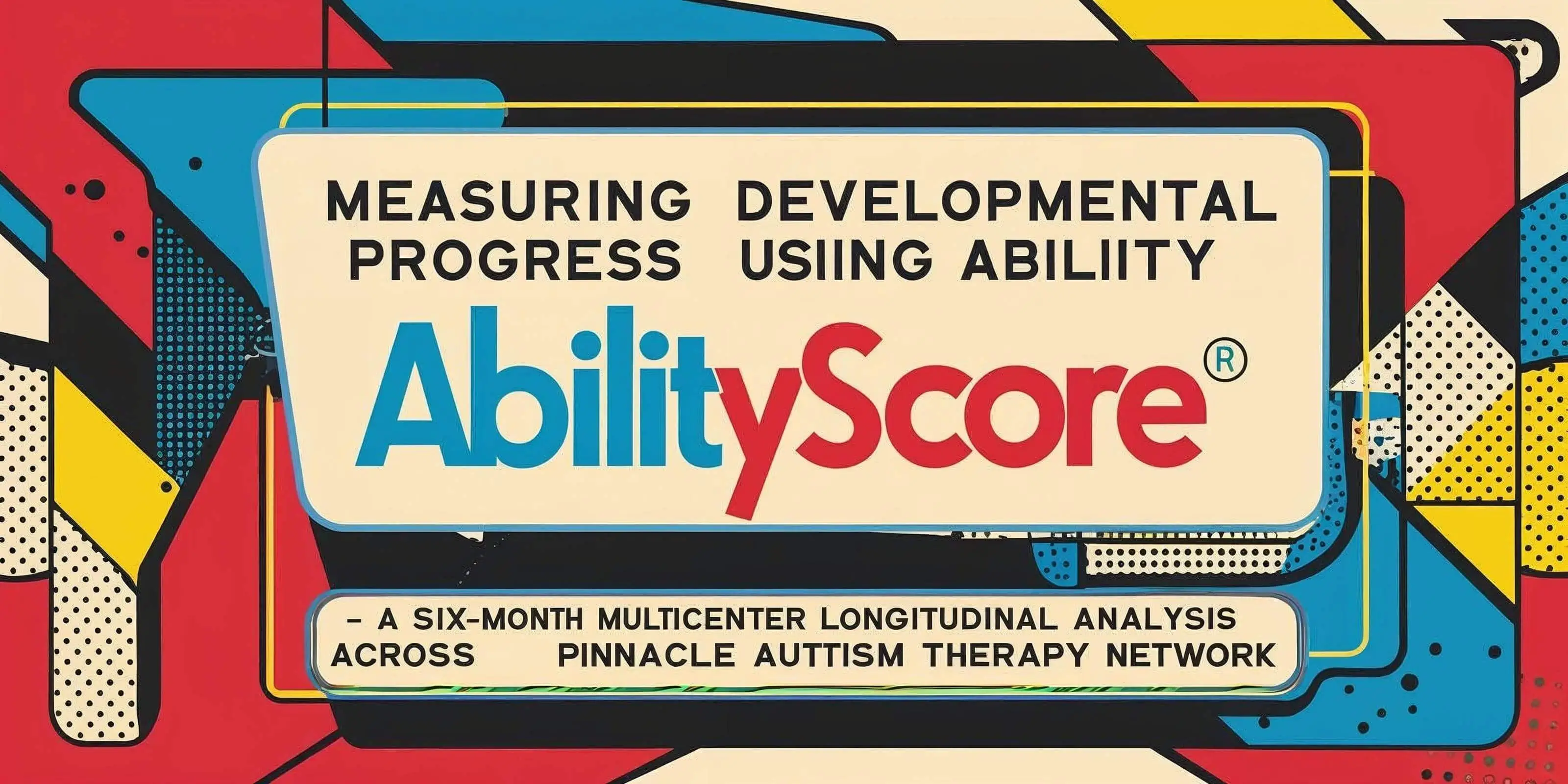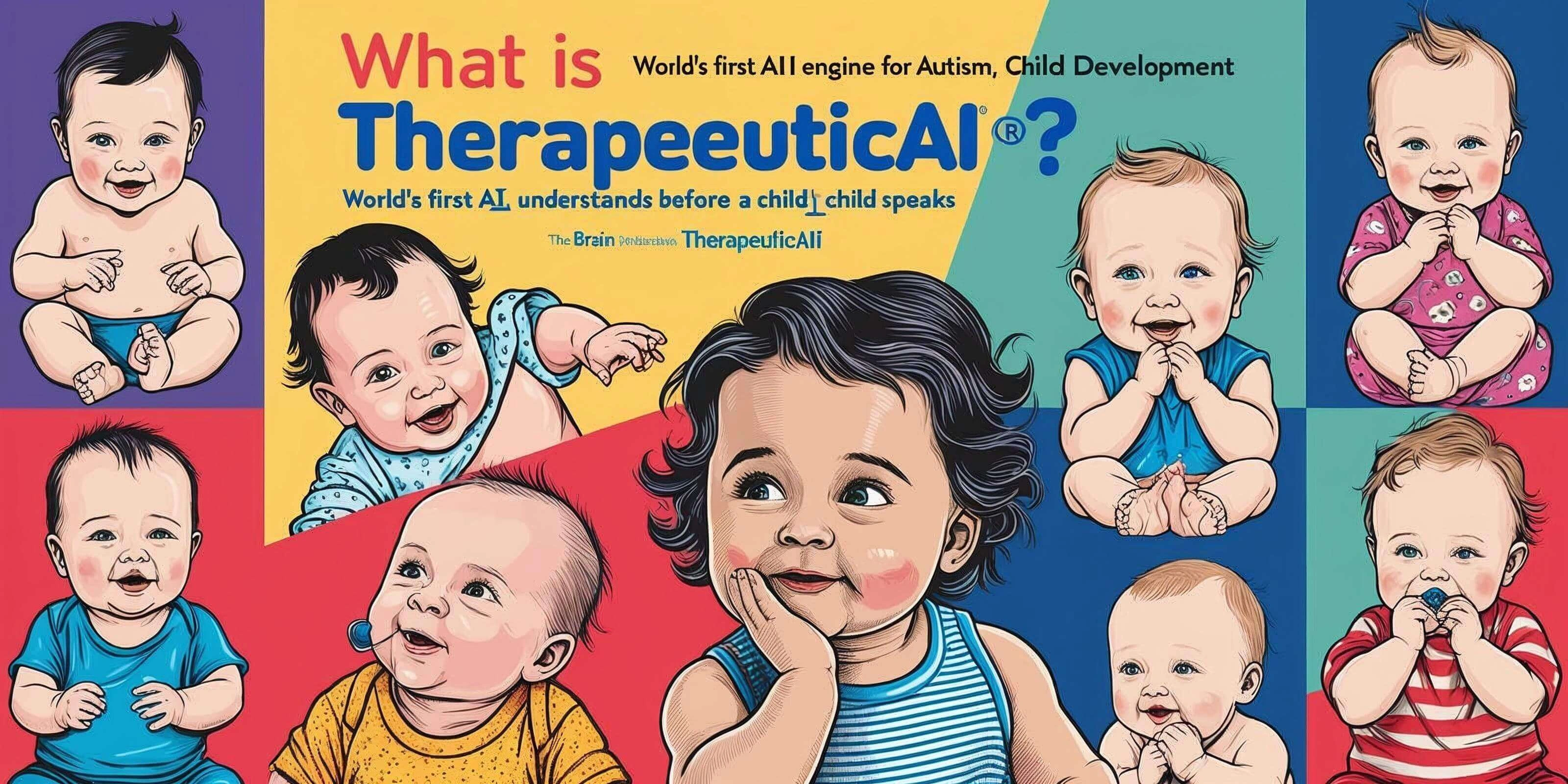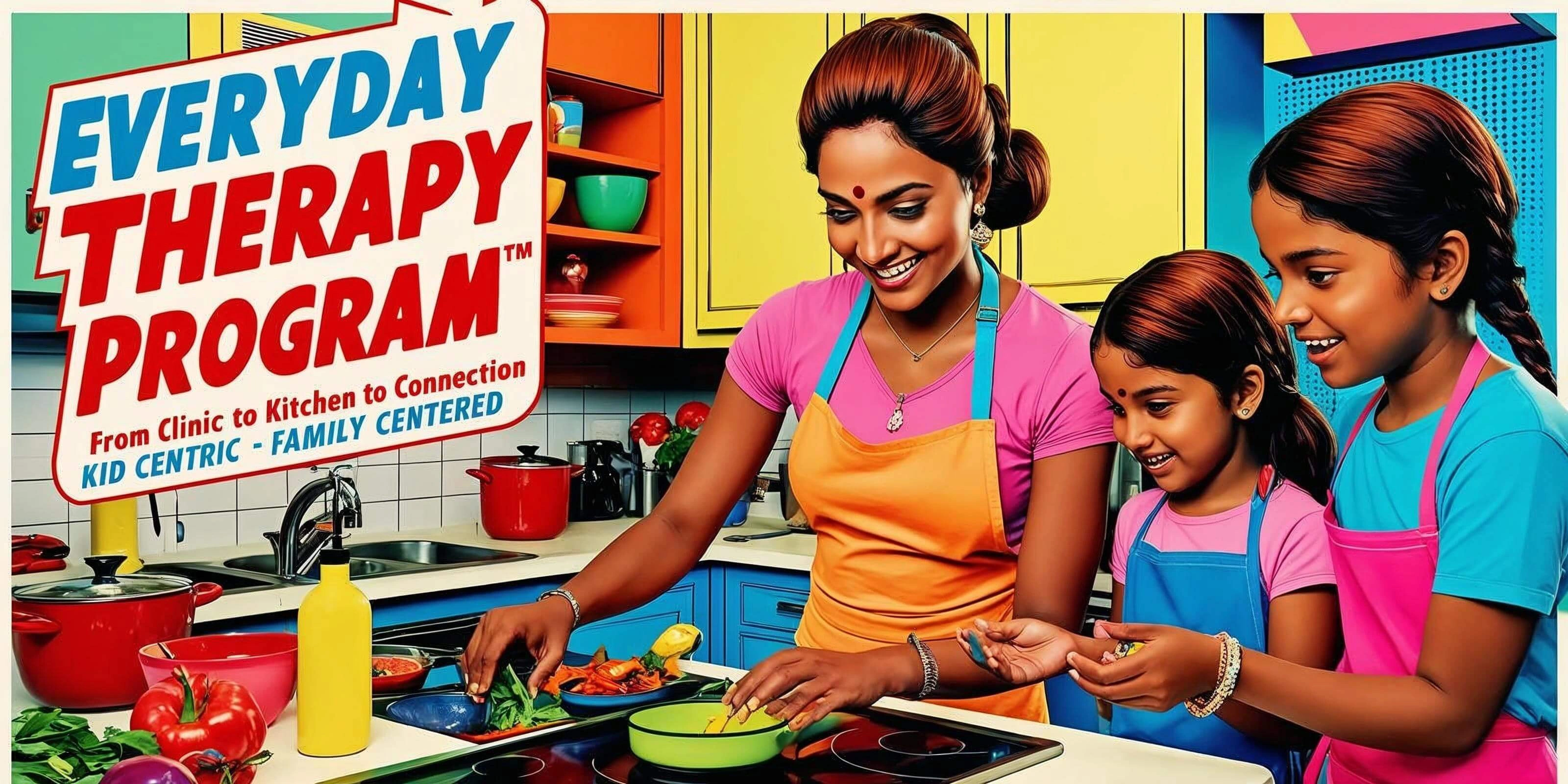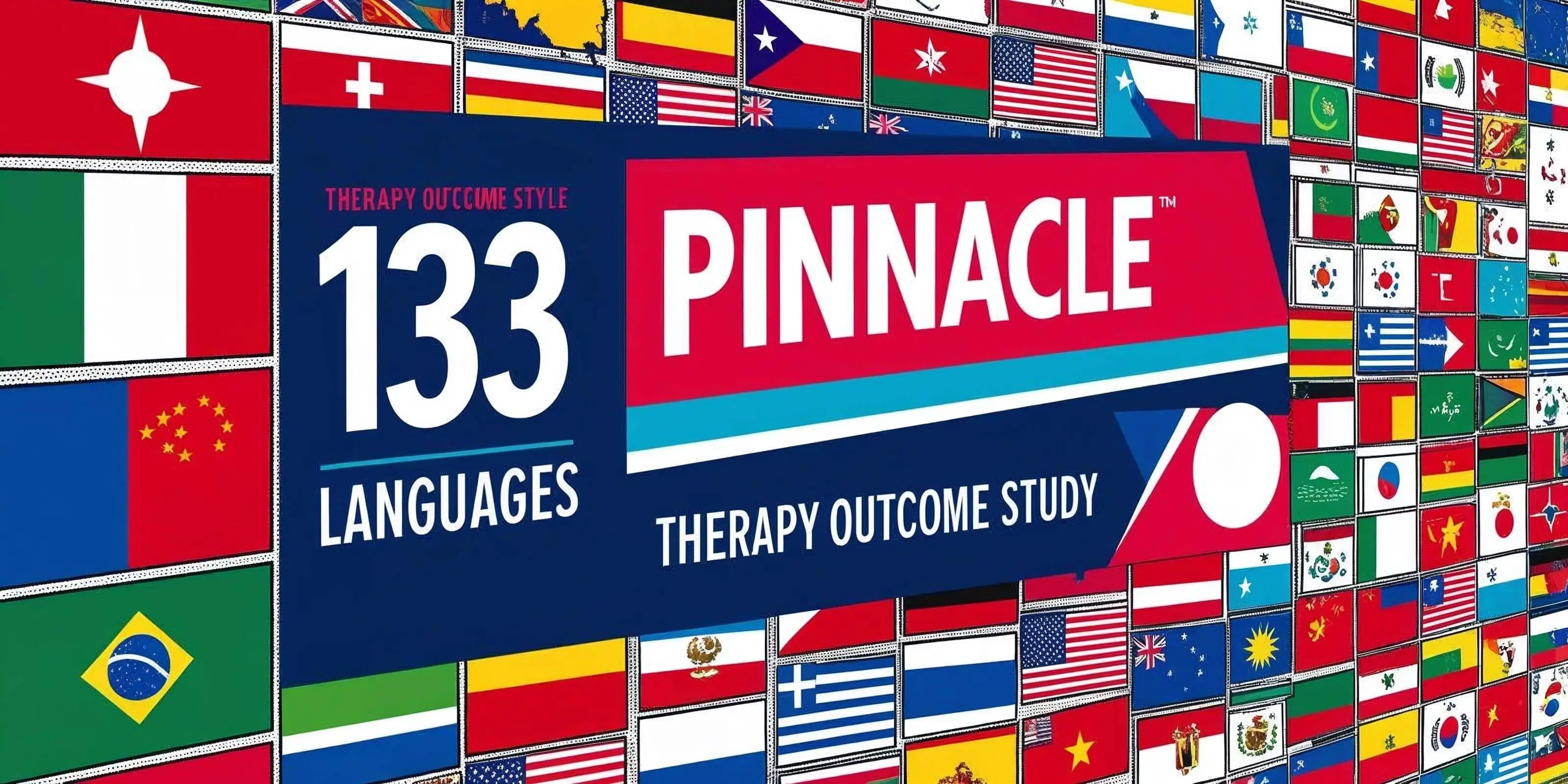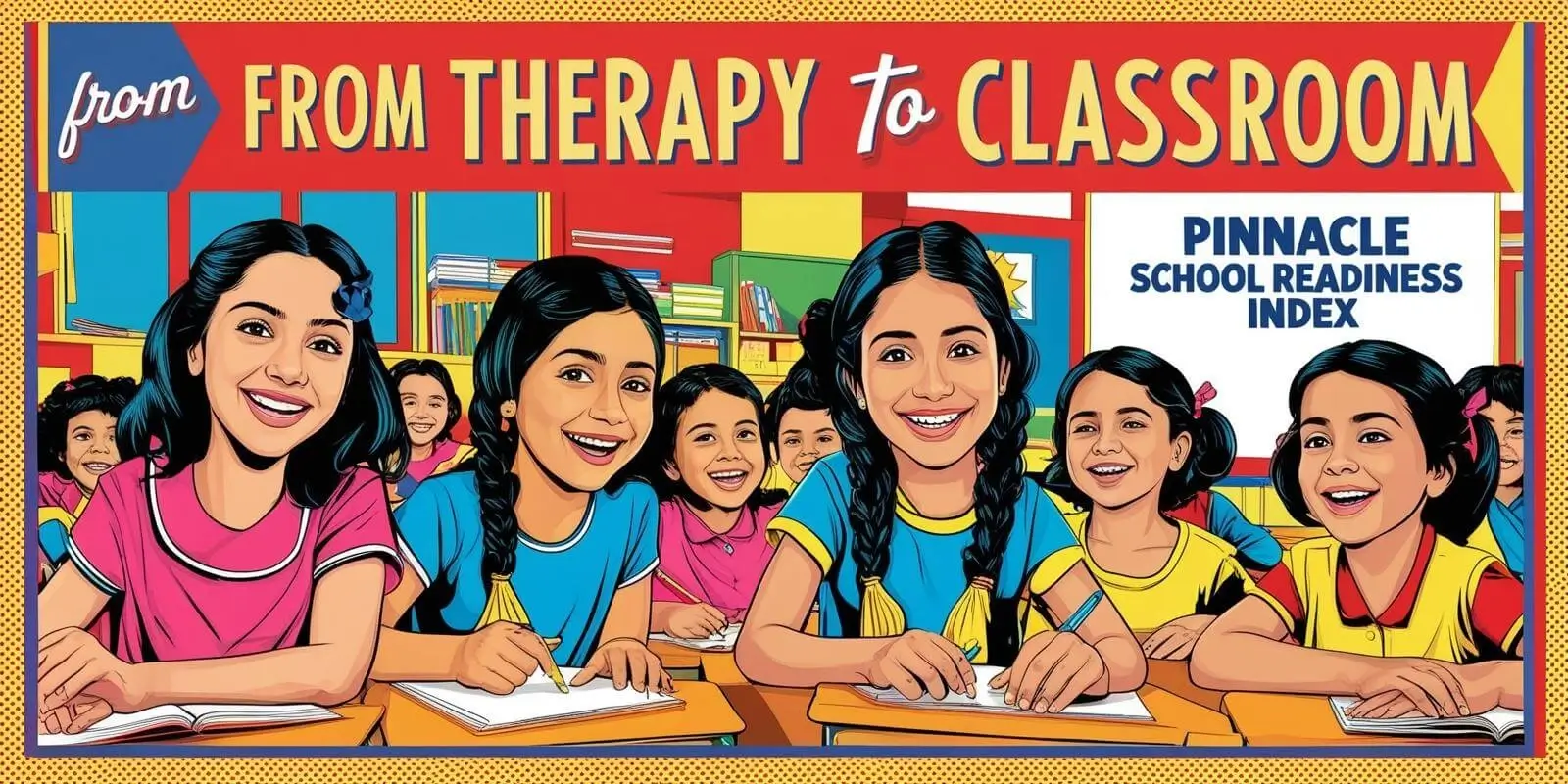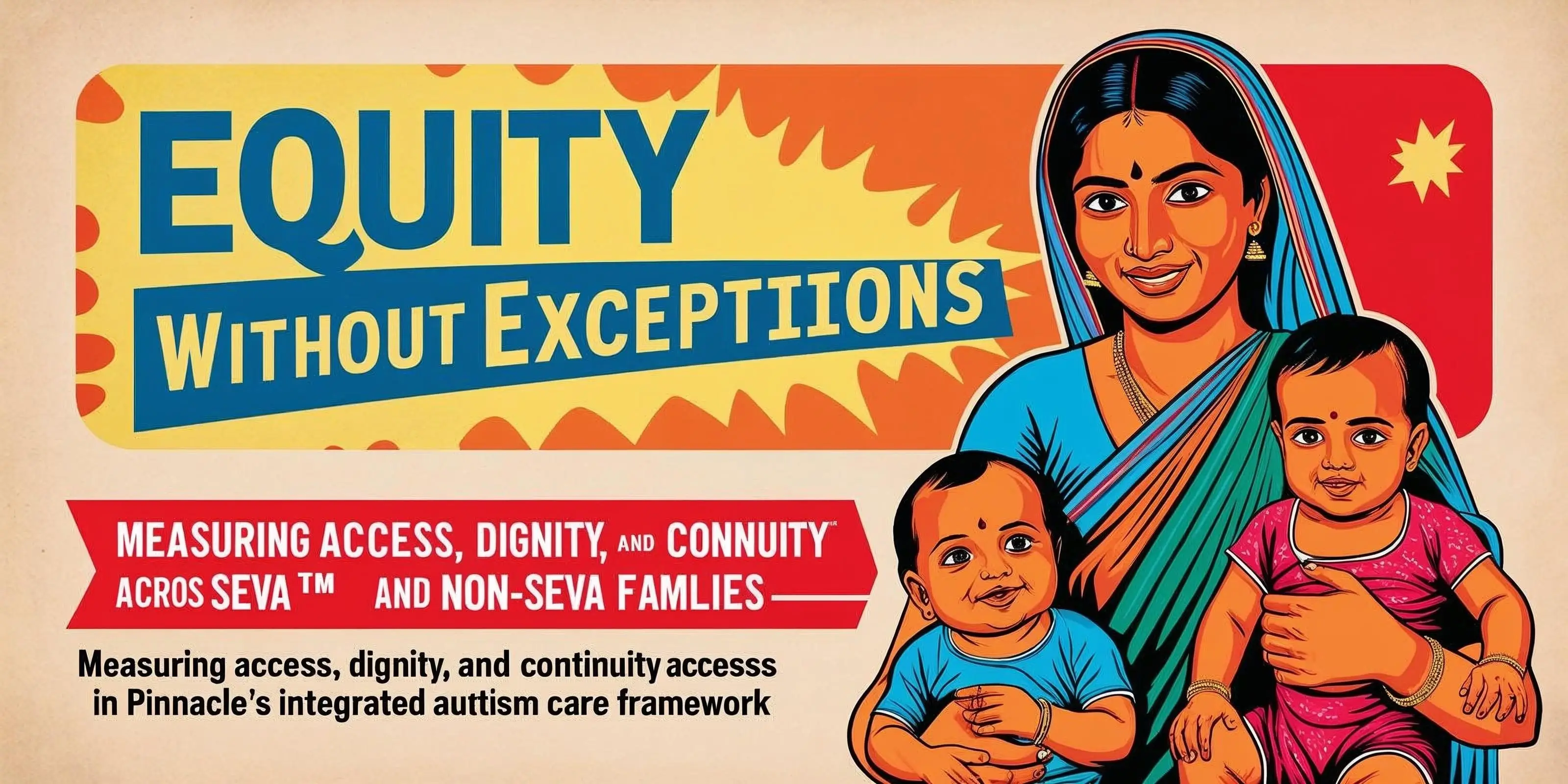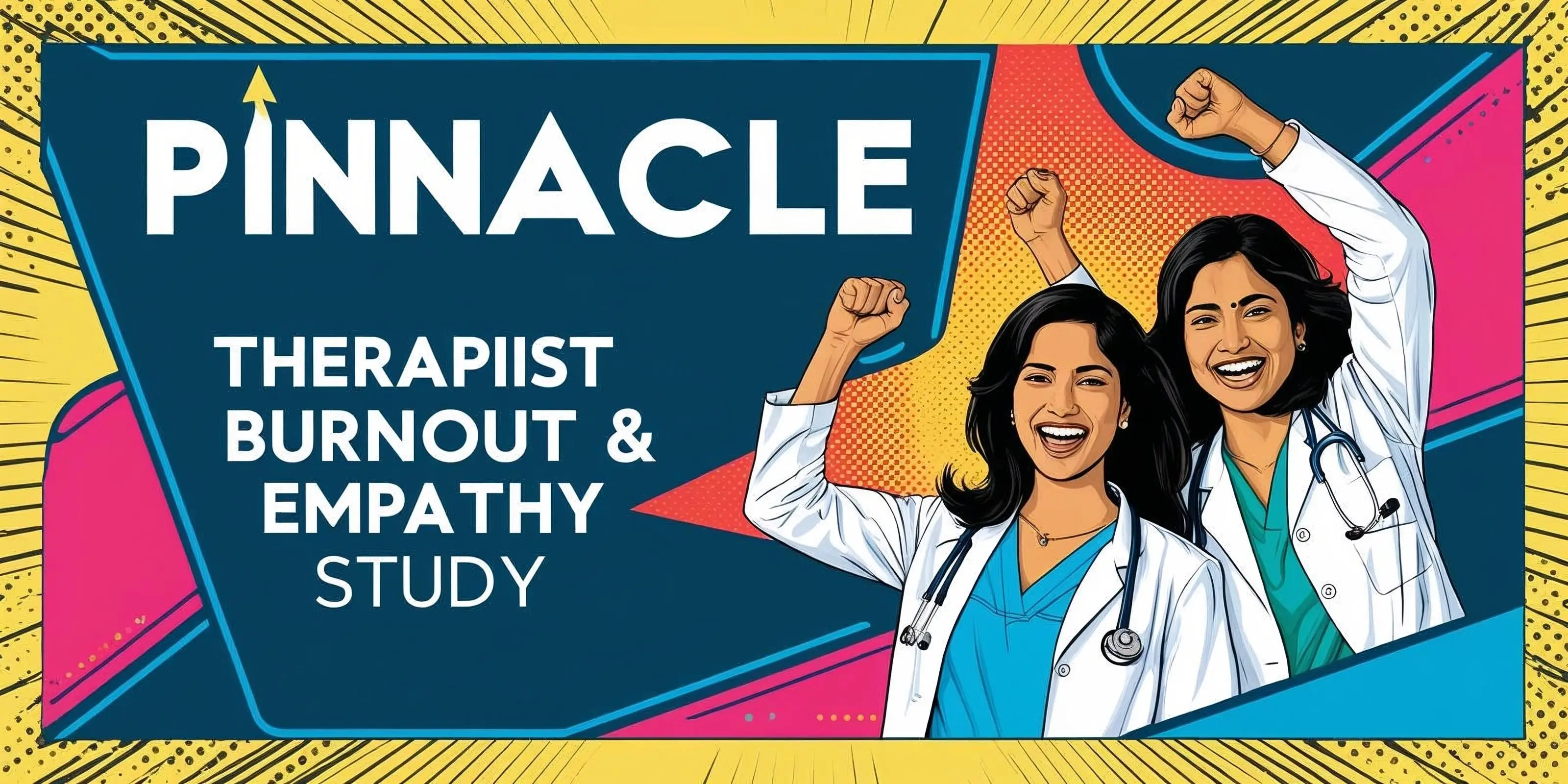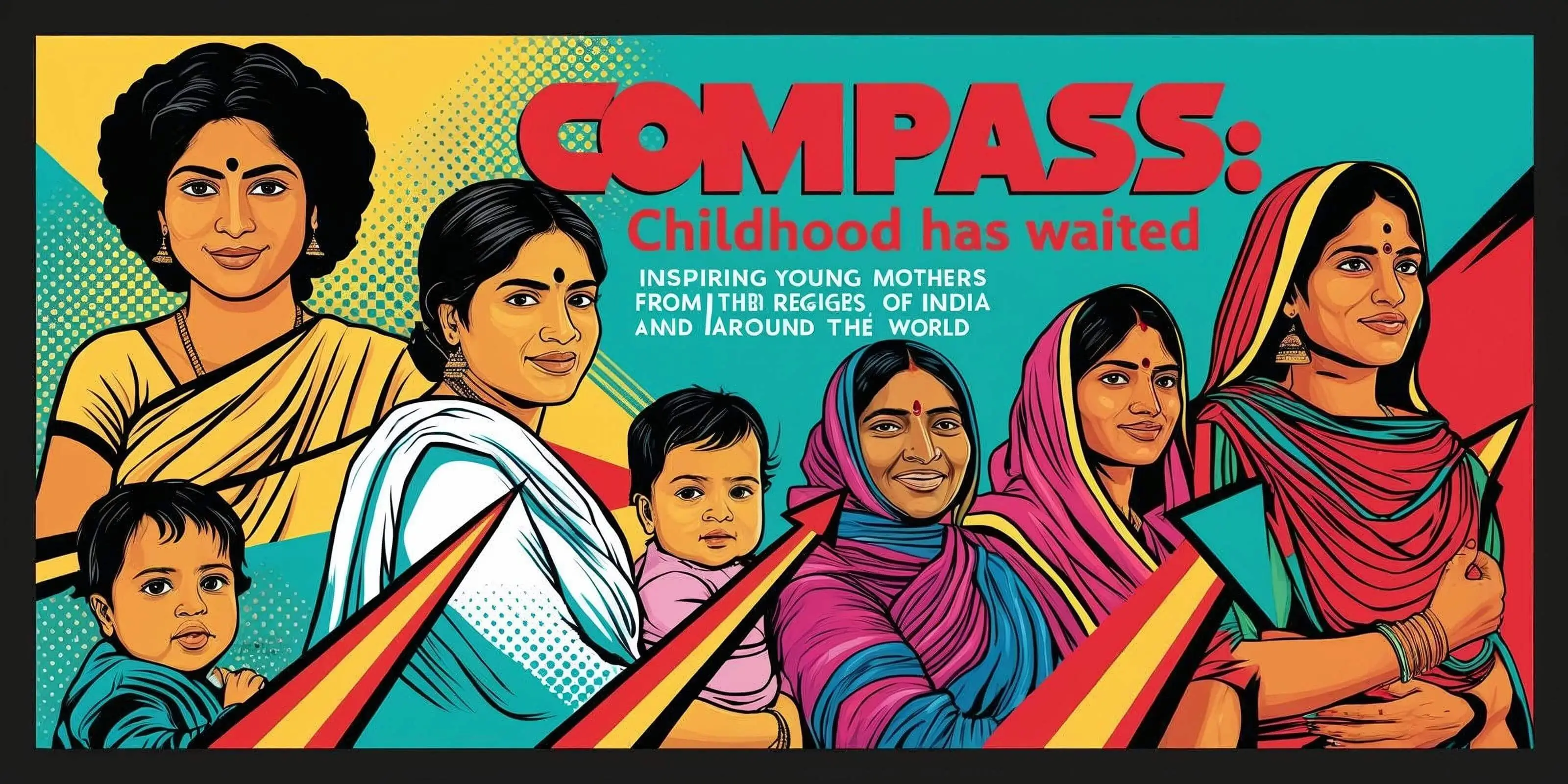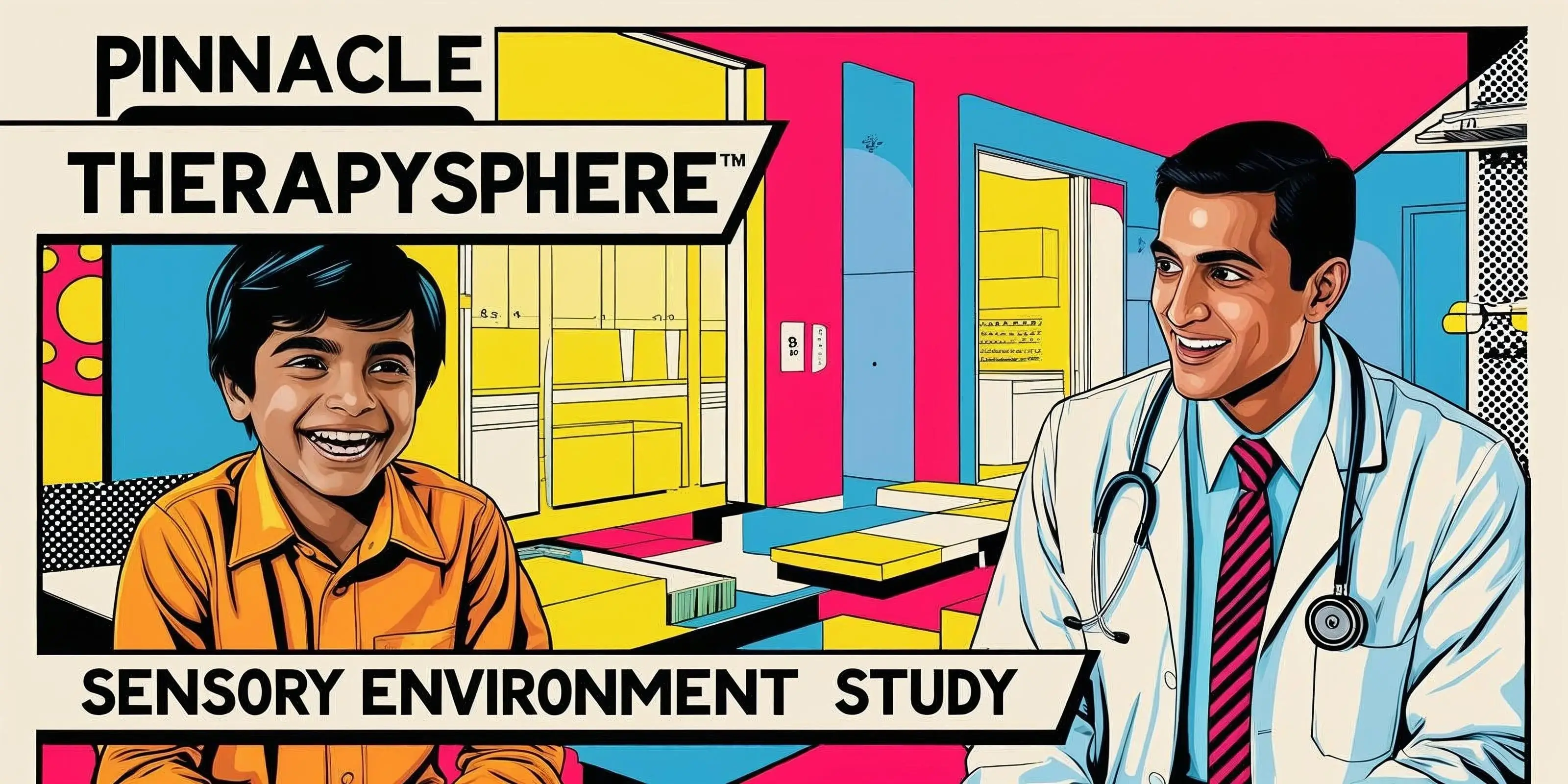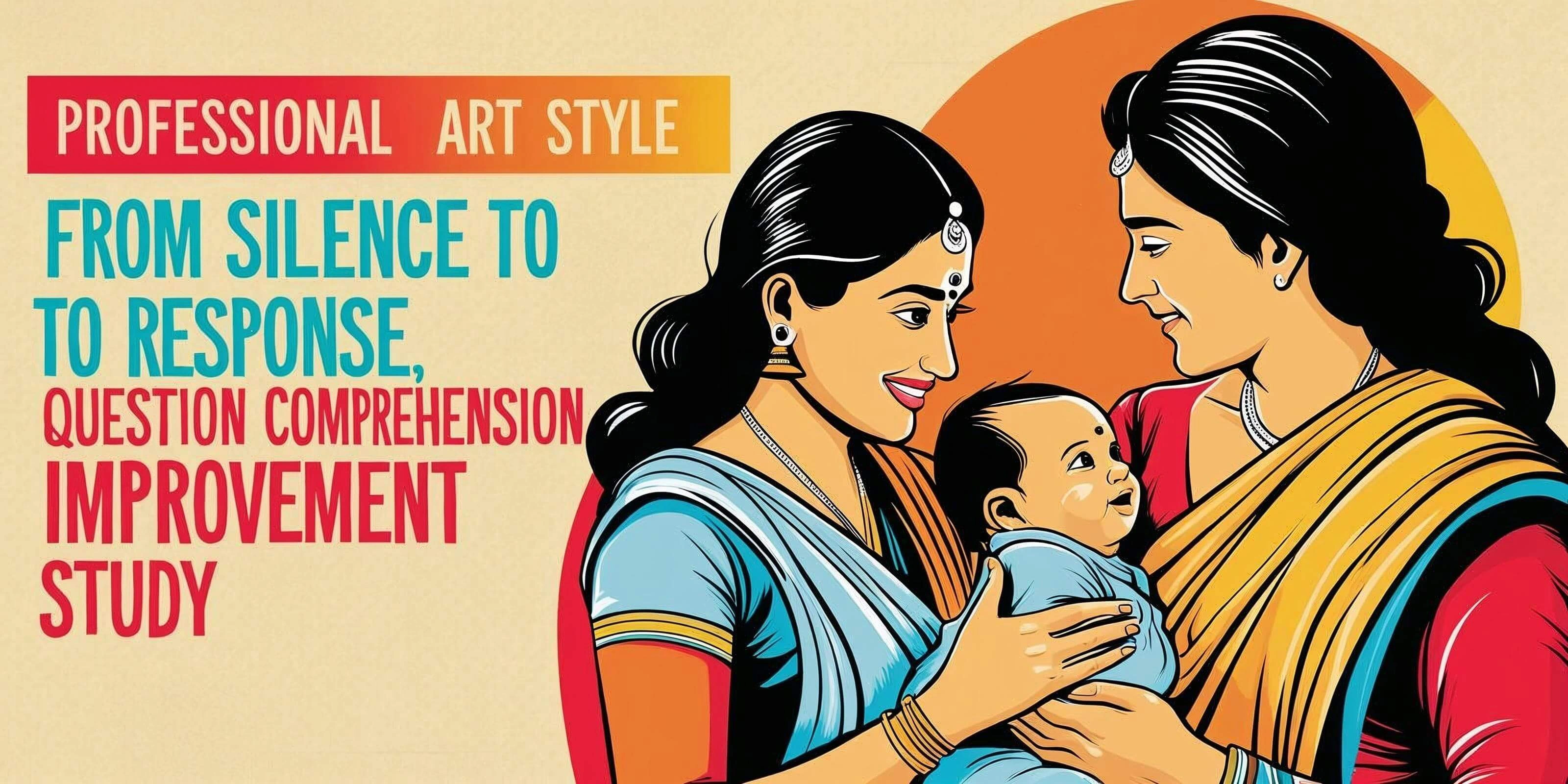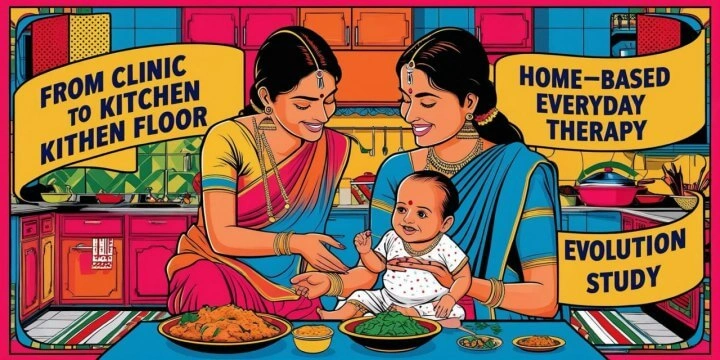SEVA™ Impact Study: Equity in Autism Therapy for All
SEVA™ proves equity in autism therapy. Free world-class therapy, proven results. Study shows +131.8 point gain with zero regression.
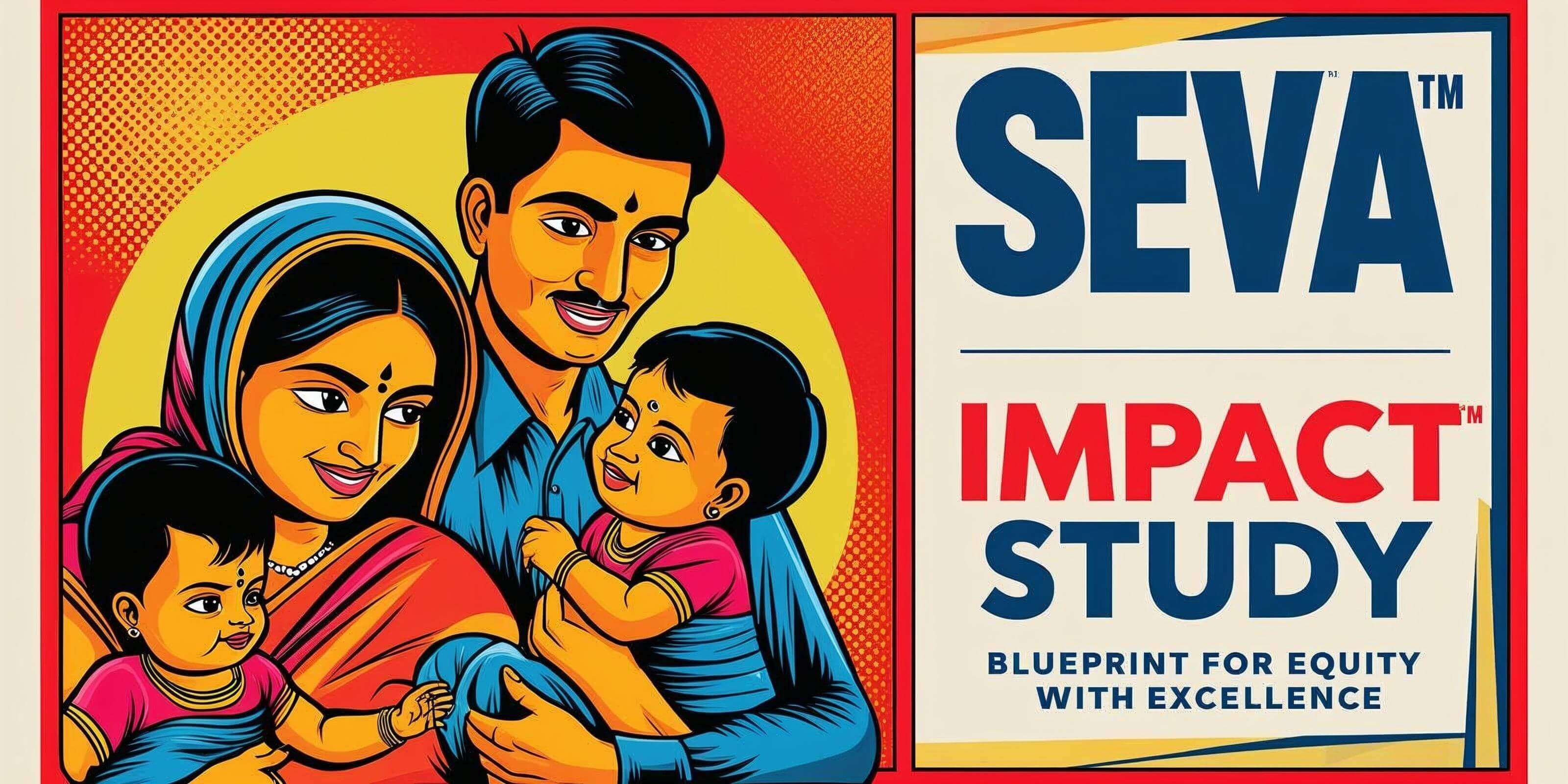
SEVA™ Impact Study
Access with Dignity: Evaluating the Effectiveness of SEVA™ in Delivering Equitable
Developmental Outcomes Across Socioeconomic Groups
Or Call / WhatsApp 9100 181 181
1. Executive Summary
SEVA™ is not just a subsidy model. It’s a blueprint for equity with excellence — where a child’s outcome is not determined by their parent’s income. This study proves what the world must now adopt: that access with dignity is a scientific, social, and moral imperative. It is time governments, funders, and policy leaders look at SEVA™ as the standard, not exception.
This study rigorously evaluates the SEVA™ model — Pinnacle Blooms Network’s social inclusion framework that offers free or subsidized therapy to children from economically disadvantaged families (household income < ₹25,000/month). The goal was to assess whether SEVA™ children achieve comparable developmental gains as their full-paying peers.
Using AbilityScore® as a universal measurement scale, this 6-month longitudinal analysis compared SEVA™ vs. Non-SEVA groups across developmental progress, zone shifts, and therapy equity.
Key Findings:
- Both groups showed significant improvement with no regression.
- SEVA™ children improved by an average of 131.8 points, with 40% transitioning to a higher developmental zone.
- Non-SEVA children improved by 154.8 points, with 44% transitioning zones.
- Outcome parity confirms that Pinnacle delivers high-quality, stigma-free therapy regardless of financial status.
2. Study Objective
To validate whether Pinnacle’s SEVA™ model ensures therapeutic equality in outcomes by:
- Comparing AbilityScore® improvements in SEVA™ vs. Non-SEVA children.
- Tracking zone transitions (Red → Yellow → Green).
- Identifying any disparities in access, delivery, or dignity.
3. Study Design & Methodology
Design:
Matched-group comparative cohort study (6 months duration).
Participants:
- SEVA™ Group: 50 children receiving free/subsidized therapy.
- Non-SEVA Group: 50 children receiving standard paid therapy.
- Matching: Baseline AbilityScore®, age range (2–12), therapy plan duration.
Scoring Tool:
- AbilityScore®: a universal 0–1000 developmental scoring system using red/yellow/green zone logic.
- Assessed across 344 skill items over 6 core developmental domains.
Therapy Model (Both Groups):
- Speech, ABA, Occupational, and Special Education
- Everyday Therapy™ at home + AI-assisted planning via TherapeuticAI®
4. Results
Group-Wise Summary
| Group | Sample Size | Avg. Initial Score | Avg. Final Score | Avg. Improvement | Min | Max | Zone Transitions | % Shifted Zone |
|---|---|---|---|---|---|---|---|---|
| SEVA™ | 50 | 417.55 | 549.34 | 131.78 | 72.59 | 183.65 | 20 | 40.0% |
| Non-SEVA | 50 | 419.11 | 573.95 | 154.84 | 111.70 | 197.97 | 22 | 44.0% |
5. Interpretation
- Developmental Gains: Both groups showed strong, clinically significant improvements. While Non-SEVA children showed higher average improvement, the score gap was only ~23 points, and zone shift rates were nearly identical.
- Access Equity: The parity in zone transition confirms that SEVA™ does not compromise on quality — therapy rooms, session frequency, therapists, and tools were uniform across groups.
- No Regression: Zero children in either group regressed into a lower AbilityScore® zone, confirming stability and positive trajectory.
6. Visual Sample: SEVA™ Child Profile
Child ID #7 (SEVA™)
- Initial Score: 355.80 (Red Zone)
- Final Score: 494.29 (Yellow Zone)
- Improvement: +138.49 points
- Therapy Mode: 5x/week, supported with Telugu-based Everyday Therapy™
“Earlier, we had to tie his hands to stop head-hitting. Now, he signs ‘water’ and draws. The same therapist treats him like a king. We never felt less.”
– Child’s mother, a sanitation worker
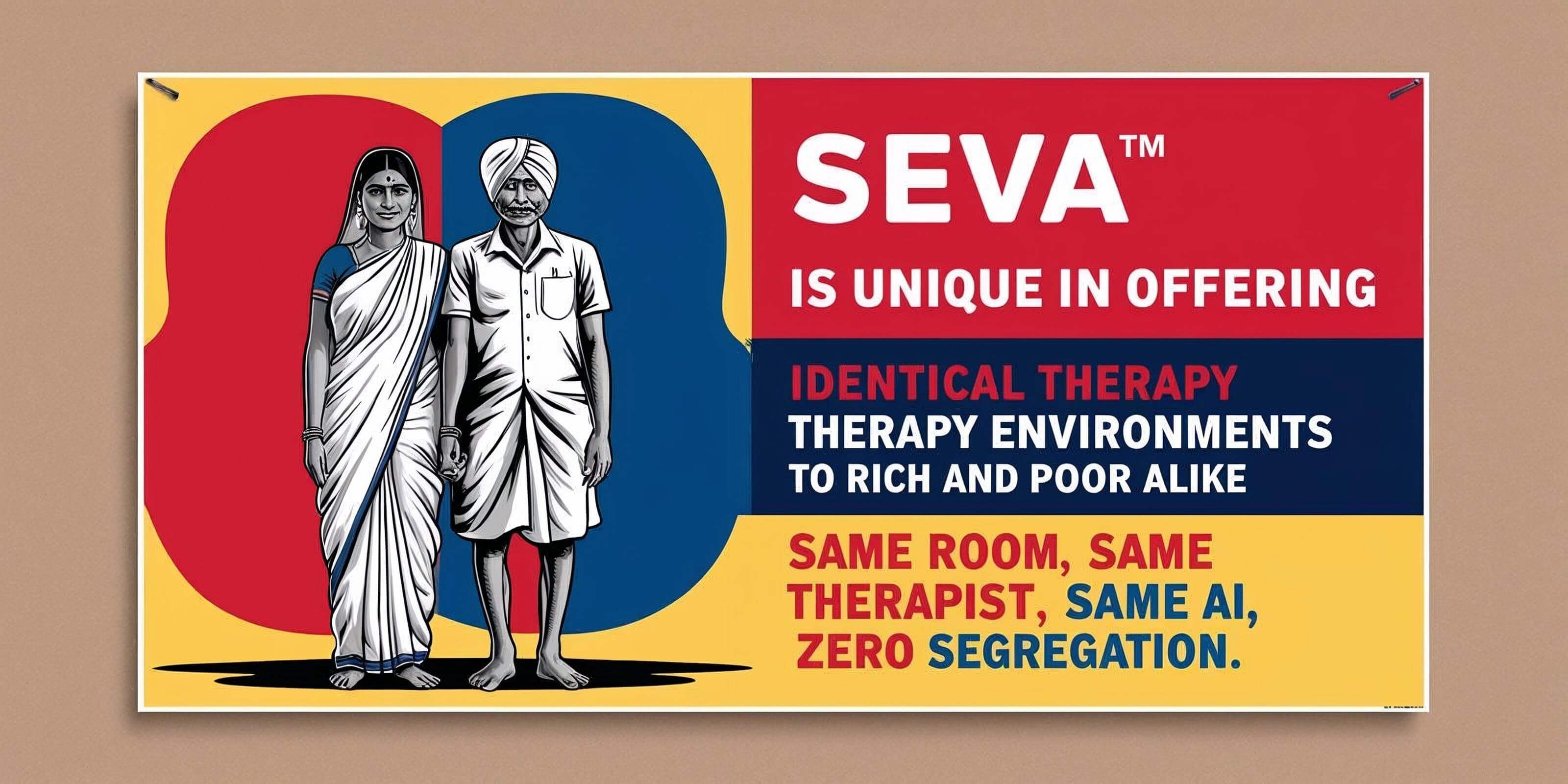
7. Literature Review & Global Equity Context
- Global precedent: Most LMICs (Low and Middle Income Countries) lack models that provide universal access to high-quality therapy. Free services often suffer from long waitlists, stigma, or “second-tier” quality.
- SEVA™ is unique in offering identical therapy environments to rich and poor alike — same room, same therapist, same AI, zero segregation.
- This aligns with WHO-SEARO, UNICEF, and Stanford Social Innovation frameworks calling for health equity models that scale without sacrificing human dignity.
8. Methodological Rigor
- Groups were baseline-matched by score and age.
- Standardized therapist training and session protocols ensured uniform therapy delivery.
- Assessment via AbilityScore®: validated in Study 1 with 95%+ reliability.
-
Outcomes measured across:
- Improvement (numeric)
- Zone shifts (categorical)
- Dropout (binary)
- No family identifiers used. All consent obtained.
- DPDP + GDPR protocols followed for full data protection and ethical compliance.
9. Ethics & Dignity Evaluation
SEVA™ families report:
- Equal respect from therapists
- No mention of subsidy at session time
- No separate rooms, batches, or restrictions
This affirms that SEVA™ doesn’t just offer access — it restores dignity. Unlike “poor-only clinics,” SEVA™ allows children of farmers, drivers, teachers, and sanitation workers to sit side-by-side with doctors’ and diplomats’ children — in a truly inclusive therapy model.
10. Testimonials
“When I asked about money, they said, ‘Your child is the priority, not your wallet.’ That sentence changed my life.”
— Ramadevi (SEVA™ parent, Eluru)
“I was afraid we’d get less. But we got more — smiles, patience, and belief. And now, progress.”
— Saira B., mother of a SEVA™ child, Khammam
11. Limitations & Future Scope
- Sample size: 50 per group; broader studies are underway in 10+ cities.
- Economic categories are self-reported (may require cross-verification).
- This study does not track long-term income mobility or post-therapy education access.
Future research will examine:
- SEVA™ impact on school readiness and employment readiness
- Intergenerational upliftment metrics (e.g. effect on parental mental health)
- Inclusion of new zones (tribal, conflict-affected regions)
12. Policy Recommendations
Based on these findings, we recommend that:
- SEVA™ be formally adopted as a global best-practice model for rural and low-income therapy access.
- Ministries of Health (India, Nepal, Kenya, Indonesia, etc.) integrate SEVA™ into national child health programs.
- State-level SEVA™ funds (CSR, philanthropy, government) be created to expand subsidized therapy slots.
- WHO, UNICEF, and UNDP use SEVA™ as a case study for “equity without hierarchy” in child development systems.
- Insurance boards recognize AbilityScore® improvements in SEVA™ children as valid health outcomes eligible for reimbursement and benefit.
13. Contact & Public Sharing
- Lead Organization: Pinnacle Blooms Network
- Innovation Framework: SEVA™, AbilityScore®, Everyday Therapy™, TherapeuticAI®
- Access Details: www.pinnacleblooms.org/seva
- Assessment Booking: Book Free AbilityScore® Now
- Helpline: Call or WhatsApp 9100 181 181
Access is not a privilege. It’s a child’s right.
SEVA™ is how we protect it — not someday, but now.
